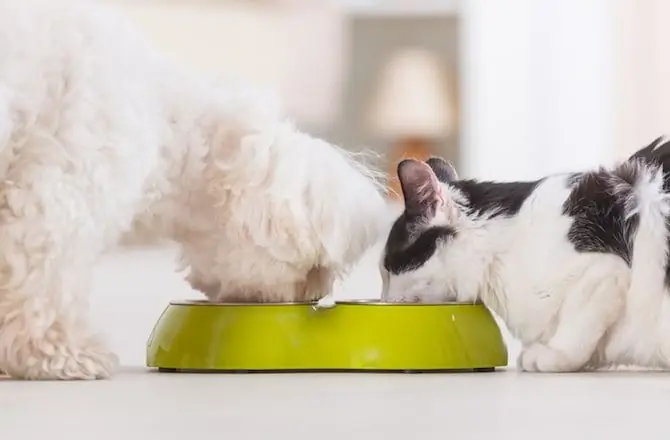
- Autor Daisy Haig [email protected].
- Public 2023-12-17 03:06.
- Naposledy změněno 2025-06-01 06:47.
K čemu je tedy ten trapný test kakaa?
Je to dost stresující, abyste zadkem svého mazlíčka porušili plastovou tyč, že? Jaký to má smysl?
Říkáte: Pokud je cílem, aby byl můj mazlíček zdravější a bez parazitů, pak důvěřuji vašemu úsudku, ale musím říct, že kontroly stolice jsou jakýmsi krutým a neobvyklým druhem trestu. Nebudu takový druh ponížení, dokud nebudu muž a čtyřicet, že? A výkaly nejsou tak užitečné, že?
Říkám: Pro začátečníky nemusí váš mazlíček podlehnout podlý prut. Čerstvý vzorek se obvykle snadno získá ráno (nebo odpoledne) před vaší každoroční návštěvou nebo kdykoli vaše zvíře trpí gastrointestinálními příznaky. Není to tak těžké, opravdu. A pokud načasování není úplně v pořádku (stolice by pro dosažení nejlepších výsledků neměla být starší než hodina), vaše veterinářská nemocnice vám určitě neodepře právo přinést si podle potřeby pohodlí čerstvý vzorek. Slib.
A ano, fekální vyšetření, i když jsou relativně levná a rutinní, jsou nezbytná. Ale jak tento příspěvek prokáže, je také pravda, že ne všechny fekální testy u vašich mazlíčků zachytí parazitární infekci. Proto mohou být nutná roční nebo sériová vyšetření stolice.
Nyní k primárnímu cíli testu:
Veterináři vždy hledají parazity, kteří by se mohli dostat do gastrointestinálních traktů vašich mazlíčků. Jistě, i my lidé můžeme dostat parazity, ale náš moderní životní styl má tendenci být méně příznivý pro infekci parazity. (Kdy naposledy jsi šňupal na dvoře, rty k zemi, abys mohl vdechnout kočičí hovno nebo dva?)
Ano, domácí mazlíčci dostávají spoustu parazitů. Zde je ukázka nejčastějších gastrointestinálních parazitů, které zde vidím [v parazitním nebi, které je polotropické jižní Floridě]:
Škrkavky u psů a koček.
Měchovci u domácích zvířat
Whipworms v domácích mazlíčcích
Giardia v domácích mazlíčcích

Jaterní motolice u domácích zvířat
Jaterní motolice u domácích zvířat
coccidia in pets
i’ll not go into the gory details on each but you can click on the links and check out the info for a better understanding of how these parasites can potentially affect your pets and even your human family.
sure, pet-popular parasites don’t often infect humans in the so-called, “developed” nations all of you reading this likely live in, but that doesn’t mean it doesn’t happen. roundworms and hookworms are still a factor in humans in the us, as is giardia, which will give you the nastiest case of diarrhea you can imagine short of amoebic dysentery.
since veterinarians are also on the front lines when it comes to public health, consider that fecal exams are not just necessary for healthy pets, they’re essential for healthy humans, too, more so if your family members are very young children, very old adults or otherwise immunocompromised (transplant patients, hiv-positive humans, chemo recipients, etc.).
how do we identify these critters in the fecal exam?
the short answer: with a microscope.
the long answer: we take a tiny sample of your pet’s stool (very fresh is always best). a few grams is enough (think an eighth of a teaspoon if that’s easier). then we put it through one of three processes.
1. the smear: we take about a half gram of stool and smear it onto a microscope slide to search for parasites (and bacteria) directly. many times we’ll see them swimming about. finding evidence of parasites in a simple smear is often indicative of severe infection.
2. the float: this method relies on mixing the stool with a special solution. it filters out the big pieces of stool in a tube or other cylindrical vessel and allows the eggs and other small critters to float up to the top, buoyed by the solution’s specific gravity. a microscope slide’s cover slip is typically used to recover the floaters. some parasites, however, aren’t amenable to flotation. eggs seem to do best through this method.
3. centrifugation: spinning the heck out of stool in a centrifuge when it’s mixed in a sugar solution picks up about 50% more parasite eggs and oocysts than through flotation. therefore, i like this method best for worm eggs, giardia, and coccidia--though i’d never go without a smear. problem is, most hospitals don’t yet use this method. it’s more expensive than others and research demonstrating it’s much greater efficacy is fairly recent.
so now you know the truth: not all fecal exams are created equal. not only does this test rely on careful selection of materials and methods, it also requires a trained eye. in our practice, for example, one of our techs detects parasites about 50% more often than the veterinarians and other techs/assistants. (that’s why we also do floats so that she can check them all at her convenience when she comes back from her day off.)
it’s also true that even a parasite-infected animal will often not come up positive on a fecal test. human error and equipment choice are factors, but so is the parasite itself. sometimes they do not make themselves known in the stool. worms sometimes aren’t shedding their eggs and subclinical (low-grade or smoldering) infections may not reveal much, either.
again, that’s why it’s important to perform this test as often as is reasonable. for all dogs and cats at least three times during the first few months of life. i want to see at least two negative tests in a row, a month apart, before i’ll feel comfortable that my patient is parasite-free.
for adults, once a year is great--that is, unless they show gastrointestinal illnesses. in this case, serial fecal tests make sense--or at least one every time the symptoms recur until a definitive diagnosis is made (whether it’s parasites or something else).
ultimately, fecal tests are a critical component of our veterinary hat of tricks. doing without may seem like the economically wisest thing in the absence of gastrointestinal symptoms, but consider: parasites can wear pets down in ways you might not expect. and it’s never wrong to be too safe in the presence of diseases that may also affect your family. ‘nuff said.
Doporučuje:
Jak Plánovat Péči O Vašeho Mazlíčka, Pokud Dostanete COVID-19

Poradenství od veterinářky Dr. Katy Nelsonové o tom, jak plánovat vašeho domácího mazlíčka v případě, že dostanete COVID-19. Zjistěte, jak udržet vaše mazlíčky v bezpečí pro případ, že byste byli v karanténě
Je Jídlo Vašeho Mazlíčka Bezpečné?

Nová studie projektu Clean Label Project prověřila více než 900 krmiv pro psy a kočky a ošetří více než 130 toxinů, jako je olovo a arsen. To, co našli, bylo přinejmenším otevření očí
Proč Je Důležité Uspořádat Pamětní Ceremoniál Mazlíčka, Který Zarmoucuje Ztrátu Mazlíčka

Ztráta domácího mazlíčka může být obtížnou zkušeností. S pomocí památníku na domácí mazlíčky můžete oslavit život vašeho mazlíčka způsobem, který přináší uzdravení a uzavření
Co Je To Fekální Transplantace Pro Psy A Kočky?

Vzhledem k úspěchu transplantace stolice u lidí si veterináři a veterinární vědci kladli otázku, zda by tento postup mohl pomoci i psům a kočkám s chronickým střevním onemocněním a průjmem. Zjistěte, jak funguje transplantační léčba fekálií a zda má pro vašeho mazlíčka smysl
Co Je Test Titru A Je Vhodný Pro Vašeho Mazlíčka?

Abychom čelili rostoucímu zájmu veřejnosti a řešili důkazy, že některé vakcíny mohou mít nepříznivý účinek na některá domácí zvířata, jedním z lékařských postupů používaných k určení potřeby očkování je titrační test. Více informací zde
